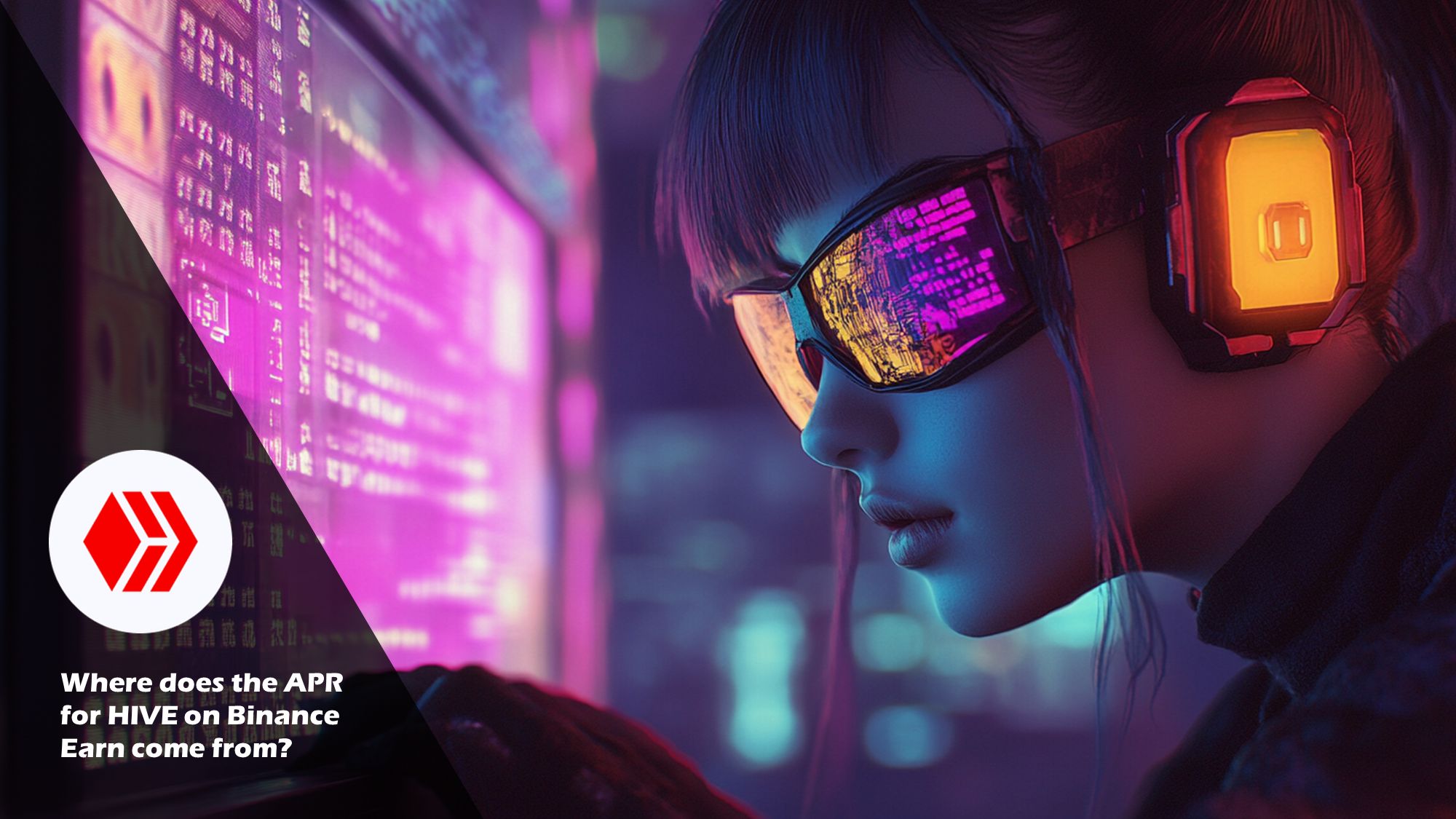
I wanted to understand a bit better how Binance is able to pay such a high APR (currently >40%: https://www.binance.com/en/earn/hive) on HIVE for their Earn product (which is a question I've also seen asked a few times on X), so I asked ChatGPT to do a "Deep Research" analysis and provided it with the background information and some sources to check. I felt it produced a useful answer, so I decided to share it here. I'm also posting it here so I can easily reference it later if someone else asks about this.
Please note that the answer below is 90% produced by ChatGPT (I mainly went in and fixed some cosmetic things to make sure the answer renders correctly).
Also note that this is not an endorsement of Binance's Earn product. Make your own decisions based on your own perceived risks.
How Binance Offers 40%+ APR on HIVE Flexible Earn
Screenshot of Binance Simple Earn showing \~40% APR for HIVE flexible savings.
Binance’s Flexible Earn and Yield Generation
Binance’s Simple Earn (Flexible) product doesn’t create yield from thin air – it leverages deposited assets in various ways. According to Binance, assets in flexible earn are provided as liquidity to its business units for “operational purposes, including lending ... via Margin and Loan products.” In other words, your HIVE is likely being lent out to other users (e.g. margin traders or borrowers), and the interest they pay is passed back to you as the APR reward (Source). The “Real-Time APR” is dynamic, reflecting “demand, supply dynamics, and other factors”. A very high APR usually means a large portion of the available HIVE pool is currently lent out (high utilization). Binance itself confirms that “a higher APR generally indicates a larger proportion of assets being lent out relative to the total pool size.”. In short, Binance is able to pay \~40%+ on HIVE because traders on the platform are willing to borrow HIVE at even higher rates, and those borrower payments fund the interest you earn.
Notably, this yield is not coming from Hive’s own blockchain staking or inflation. If you stake HIVE natively (powering up to Hive Power and curating content), you’d only earn single-digit to low-teens percent annually – nowhere near 40%. The 40% APR is a Binance-driven rate, stemming from internal lending and possibly trading strategies, rather than any on-chain reward specific to HIVE itself (Source).
Why HIVE’s APR Spiked Above 40%
Such an unusually high APR for a flexible savings product signals surging demand to borrow HIVE on Binance. Community members observed that HIVE’s flexible APR jumped from around 15–18% to over 40% in a short time (Source), coinciding with a price pump in HIVE’s market. When HIVE’s price spiked, many traders rushed to short HIVE or arbitrage it, which means they needed to borrow HIVE (to sell it high and buy back lower later). This wave of borrowing drove the utilization of Binance’s HIVE pool to its limits, and Binance’s algorithm responded by hiking the interest rates (APR) to attract more HIVE into the lending pool (Source). Essentially, HIVE became a “hot” asset to borrow, so lenders (depositors) were rewarded with a very high return due to that demand.
In community forums, users noted there’s “nothing suspicious” – the percentage is dynamic. In calm periods, HIVE’s flexible APR might be in the single digits, but “since everyone is going crazy and taking loans, the demand is high and the rewards will be high too” (Source). Binance often takes a cut of the borrowing interest: for example, in past market runs, Binance was charging \~60% annualized to USDT borrowers while paying \~25% to USDT lenders (Source). In HIVE’s case, an APR >40% implies borrowers could be paying on the order of 50–60% (or more) to borrow HIVE. This is usually short-lived; as one commenter noted, “it will go down once the hype dies out.” (Source). HIVE’s APR reportedly peaked around 50% before settling back to the 40% range (Source) – a clear sign that the spike was driven by temporary imbalances in supply and demand.
The Role of Futures/Perpetual Trading Demand
The futures market for HIVE likely played a significant role. Binance launched a HIVE/USDT perpetual futures contract (up to 75× leverage) in late 2024 (Source), providing another way for traders to long or short HIVE. When HIVE’s price surged, two things could occur:
-
Heavy Short Interest: If traders believed HIVE’s pump was unsustainable, many likely shorted it. Shorting on Binance Futures doesn’t require borrowing HIVE directly, but if futures prices fall below spot (backwardation), the funding rate turns negative. Traders then arbitrage by going long perpetuals and shorting spot – the latter requiring borrowed HIVE via Binance Margin (Source). This creates demand for HIVE loans, raising APR on Simple Earn.
-
Heavy Long Interest: Alternatively, in a contango scenario (futures price > spot), arbitrageurs might short perpetuals and long spot HIVE. This doesn’t directly increase HIVE borrowing, but it drains HIVE from the lending pool, tightening supply and driving up APR. Also, if some traders avoided high futures funding fees, they might short spot instead – again requiring HIVE borrowing.
In the case of HIVE’s 40% APR, the more likely scenario was heavy short-side pressure, where traders needed to borrow HIVE to short the spot market while exploiting perpetuals. Binance’s own documents confirm Earn assets can be used for margin lending and more (Source). At the same time, Binance set ±2.00% per 4 hours as the max funding rate at futures launch (Source), indicating anticipation of extreme price action. If max negative funding were sustained, shorts would be paying >1300% APR, which arbitrageurs would be eager to exploit via HIVE borrowing – pushing lending APR to 40%+.
Conclusion
Binance can offer 40%+ APR on HIVE because traders are paying for it. The yield comes from Binance lending deposited HIVE to short sellers and arbitrageurs, who pay high interest to access the asset during volatile periods. The addition of HIVE perpetual futures created funding rate imbalances that drove mass borrowing demand. APR spiked because the lending pool hit high utilization, with Binance’s real-time algorithm responding accordingly.
This wasn’t due to on-chain Hive staking, which remains much lower in yield. Instead, Binance’s internal lending + speculative demand drove up interest rates in a temporary but lucrative spike for depositors. As activity cools, the APR is expected to normalize.

The answer above was generated in ChatGPT using DeepResearch, then adapted (formatting and links) for this post. The images were created using Midjourney.